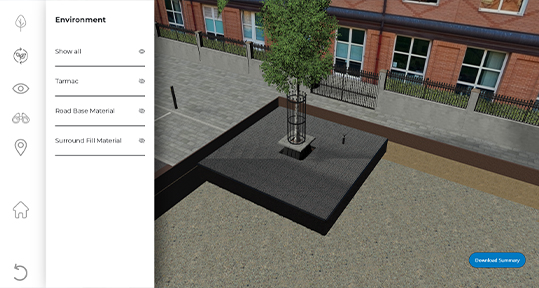We quite often see new developments and prominent city-centre regeneration schemes lauded and awarded for their novel approach to architecture. The evolution of building materials available to make our built forms smarter and more efficient as well as more pioneering in terms of structural engineering capabilities is also increasingly well understood. However, what we don’t often see in this tide of cityscape transformation globally is the explicit connection between the built form and the natural infrastructure that both surrounds it and that can also become part of its very fabric.

We could spend time talking about schemes such as Bosco Verticale or some of the ground-breaking landscape approaches being delivered across Asia by consultancies such as Arup but the point we wish to make here is fundamentally more basic. Without certain fundamental principles embedded at the outset of a new development project or regeneration scheme, the landscape has little hope of delivering the multiple benefits that we know are possible.
Forget the rooftop oases and tower blocks which have been transformed into vertical forests for a moment and consider the basic developments being delivered by the larger housebuilders from the Northern to Southern extremes of the British Isles. If we fail in our basic approach of master planning and designing in landscape on these schemes we are depriving citizens of their fundamental right to quality, healthier landscapes.
The Government have instigated several initiatives to try to incentivise housebuilders to deliver sustainable urban drainage and provide biodiverse, resilient new communities; Garden Towns and Healthy New Towns being two projects that spring immediately to mind.
But why have some of the pilot schemes failed to deliver on landscape and what can we learn so as not to beleaguer generations to come with developments that just don’t deliver.
In this piece, we contrast two developments that we believe exemplify the good and the bad of our contemporary development context and make some suggestions for a more embedded, pragmatic approach to landscape.
Case Study 1 Cranbrook – Value Engineering and a Healthy New Town Approach with Poor Quality Urban Trees and SUDS
When the NHS in Devon and other stakeholders were successful in their bid to make Cranbrook, a new town on the outskirts of Exeter, a ‘Healthy New Town’ showcasing innovation in how the design of built form and landscape could deliver better health outcomes, the hopes were high.

The scheme which runs until 2028 had some key ambitions:
• Planning policies that had a ‘whole systems approach’
• A design guide for commercial housebuilders to follow to create a healthy built environment in large housing developments
So an opportunity to use policy and to engage with those delivering sites to ensure that at the outset, the way the site is designed and planned would encourage healthier communities to develop. However, the role of the natural environments, the role of urban trees and the need for a joined-up approach were overlooked. We are now three years down the line and we have a site maturing which neither enjoys a quality landscape or urban trees, the council have also been unable to enforce conditions on-site that could have ensured that the new development delivered valuable urban trees across the site. The Cranbrook site had a development plan that was supposed to focus on street design, active travel and incorporation of green infrastructure but this has not translated into physical delivery on site.
Contrast to Case Study 2 – Bicester. Here we experience a process of strategic and innovative planning from Cherwell District Council to ensure a quality outcome for end users of the new Bicester eco-village. The vision as implemented by Willmott Dixon is aspirational and holistic and promotes early integration of green infrastructure design. GreenBlue Urban have been fortunate enough to provide our expertise to ensure this vision becomes a reality.

Part of the Bicester new development context is the Graven Hill self-build development which is the subject of our latest podcast with Tim Arkell of Waterman Group.






